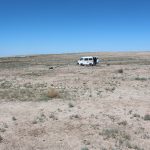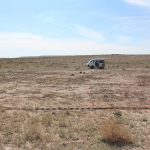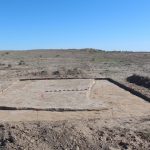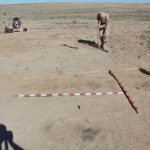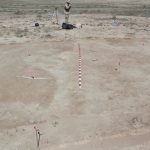Excavations at the Kuyuk-Kala ancient settlement in Uzbekistan
In May 2025, fulfilling the Memorandum of сooperation between the Tatarstan Academy of Sciences and the Karakalpak Branch of the Academy of Sciences Uzbekistan, the Institute of Archaeology named after A.Kh. Khalikov TAS jointly with the Karakalpak Scientific Research Institute of Humanities, continued archaeological investigations at the Kerder culture sites (VII-VIII centuries) in the Aral Sea Delta of the Amu Darya River.
The primary object of study is Kuyuk-Kala ancient settlement located in the Bozatov district of the Republic of Karakalpakstan. Discovered in 1928 by an expedition led by ethnographer A.A. Melkov, the settlement occupies an area of approximately 27 hectares and includes: eastern and western citadels (rectangular in shape), northern and southern courtyards (adjoining the citadels and bounded by an earthen rampart), and necropolises (in the northwestern part of the settlement).
In 2025, archaeological work has been focused on the foothill southeastern section of the site, where traces of streets with residential structures have been identified. At one of the intersections, a 96-square-meter excavation trench has been laid. During excavations, masonry structures made of square mudbricks have been discovered, and their unearthing is currently underway.
It is planned that the excavations will continue until mid-June 2025.

